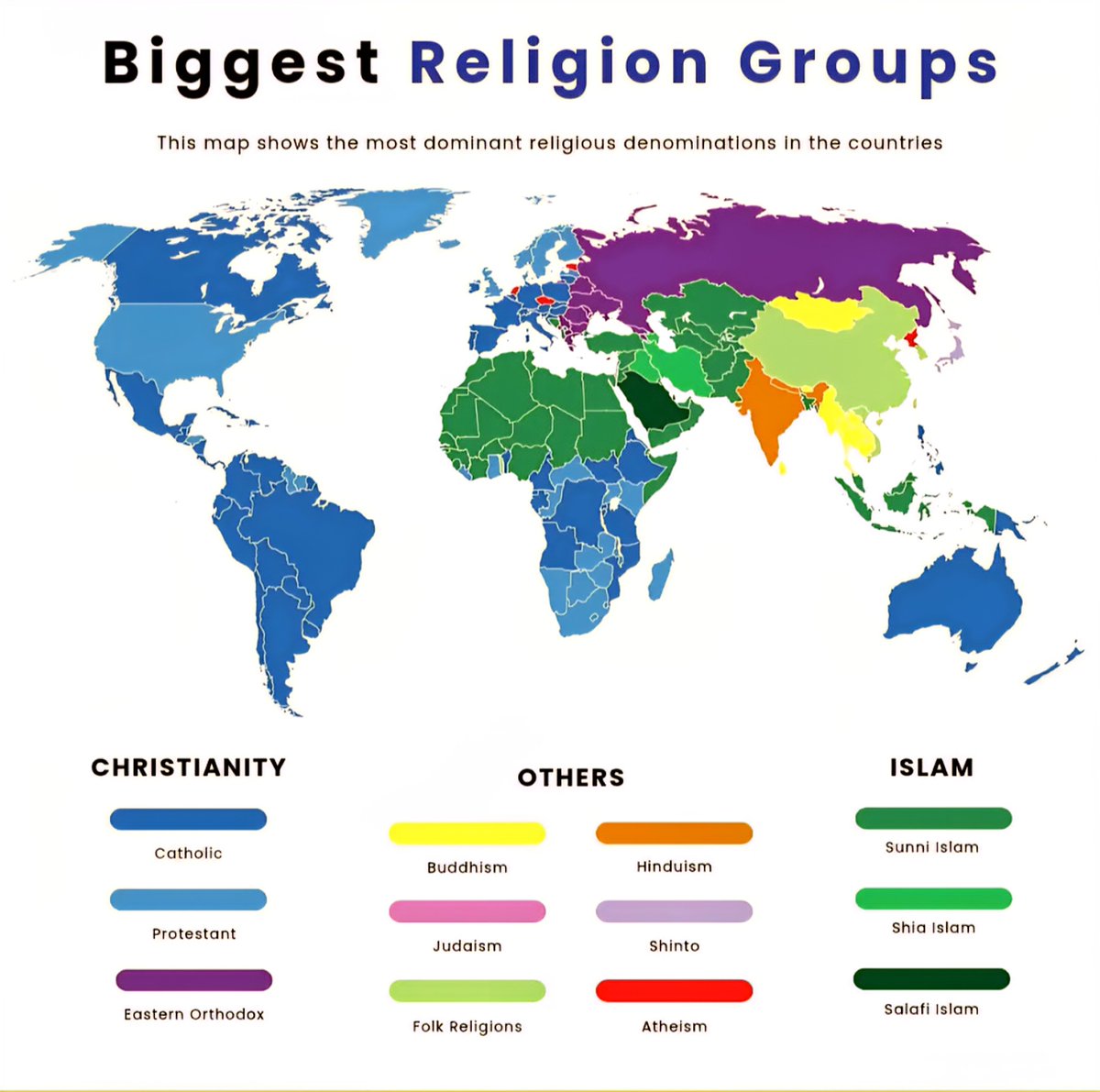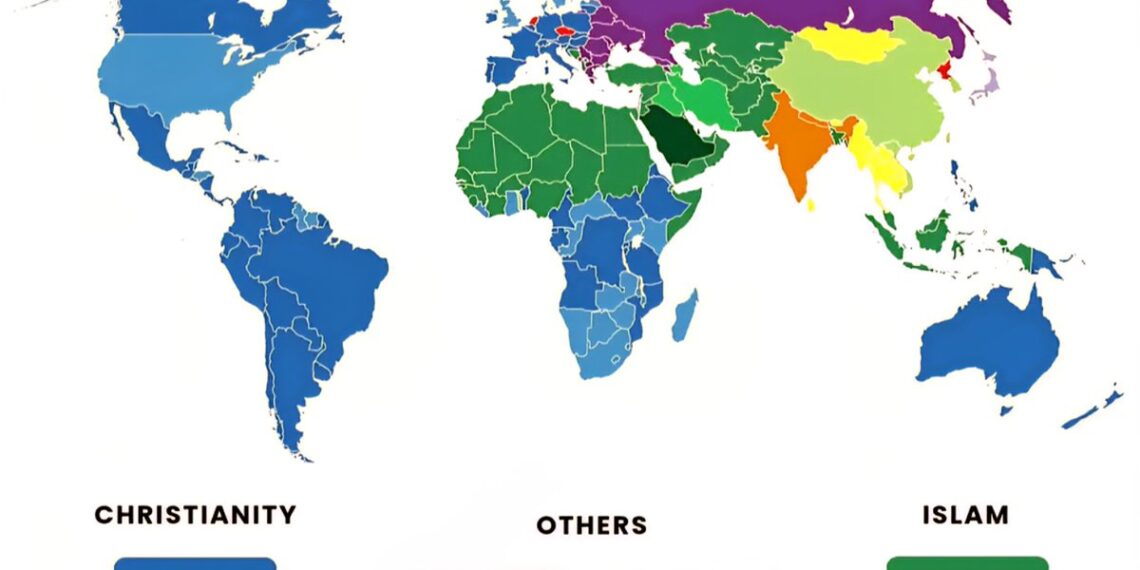Select Language:
Understanding the Diverse Landscape of Religions Across Countries in 2025

1. The Predominance of Christianity in the Americas and Europe
In 2025, Christianity continues to be the dominant religion across much of North America and parts of Europe. The United States remains a largely Christian nation, with a significant proportion of the population identifying as Protestant, Catholic, or members of other Christian denominations. In Latin America, Catholicism maintains its widespread influence, shaping cultures, traditions, and societal values.
Key Point: Despite secularization trends in some European countries, Christianity still holds cultural significance, especially in Southern Europe, such as Italy and Spain, where religious festivities and church traditions remain integral to daily life.
2. Islam’s Growing Presence in Asia and Africa
Islam remains a major religion in many Asian and African nations, with countries like Indonesia, Pakistan, Bangladesh, Nigeria, and Egypt showcasing vibrant Muslim communities. Indonesia, in particular, continues to hold the title of the country with the largest Muslim population in the world.
Key Point: In recent years, there has been a surge in Islamic cultural influence across urban centers worldwide due to migration, globalization, and the resurgence of Islamic identity in various regions.
3. The Rise of Secularism and Non-Religious Beliefs in Europe and North America
A significant trend in 2025 is the increasing number of individuals identifying as non-religious or secular across Western nations. Countries like Sweden, Canada, and the United Kingdom report heightened levels of atheism, agnosticism, and secular humanism.
Key Point: This shift is attributed to greater access to education, scientific understanding, and cultural movements advocating for individual freedoms, which have led to a decline in traditional religious adherence.
4. The Continued Influence of Hinduism and Buddhism in Asia
India remains the heartland of Hinduism, with a substantial portion of its population practicing Vedic traditions. Meanwhile, Buddhism proliferates across East and Southeast Asia, especially in countries like Thailand, Myanmar, Sri Lanka, and Cambodia.
Key Point: These religions continue to influence festivals, architecture, and daily routines in these regions, while also seeing considerable growth through diaspora communities around the world.
5. The Unique Religious Composition of Africa
Africa’s religious landscape is marked by diversity, with Christianity and Islam coexisting alongside indigenous beliefs. Southern Africa, Nigeria, and Ethiopia exhibit a blend of traditional practices intertwined with major world religions.
Key Point: Indigenous beliefs such as Vodun, Yoruba religion, and various animist practices are also thriving, particularly in rural areas and among communities seeking to preserve cultural heritage amid modernization.
6. Religious Trends in Oceania and the Pacific Islands
Australia and New Zealand maintain predominantly Christian populations, though secularism is increasingly influential. In Pacific Islands like Fiji, Christianity, especially Protestant denominations, dominates religious life, influencing social and political spheres.
Key Point: These regions are increasingly embracing religious pluralism, with growing numbers of followers of new religious movements and spiritual practices introduced through global communication.
7. The Impact of Migration and Globalization
Migration patterns and international exchange have significantly impacted religious demographics worldwide in 2025. Cities are more religiously diverse than ever before, fostering multicultural communities that celebrate various faiths and spiritual practices.
Key Point: Turkey, for instance, reflects a complex religious mosaic with Sunni Islam, Christianity, and secular influences shaping its national identity.
8. Challenges and Opportunities in Religious Coexistence
Despite widespread religious diversity, 2025 witnesses ongoing challenges related to religious intolerance, extremism, and conflicts rooted in faith differences. Conversely, many countries promote interfaith dialogue and initiatives for peaceful coexistence.
Key Point: Initiatives led by religious organizations, governments, and NGOs aim to foster understanding, tolerance, and collaboration among diverse faith communities.
9. The Role of Technology in Religious Practices
Technology influences religious life, with virtual worship services, apps for spiritual guidance, and online communities becoming commonplace. Digital platforms facilitate access to religious teachings and foster global connections among believers.
Key Point: This digital shift has enabled marginalized or isolated groups to participate actively in their faith communities, reshaping traditional religious institutions.
10. The Future of World Religions in 2025 and Beyond
As the global landscape continues to evolve, the interplay between tradition and modernity influences religious practices and identities. The rise of spiritual but not religious movements signifies an ongoing transformation in how people seek meaning and community.
Key Point: The future of religion may lie in fostering inclusive dialogues, respecting diversity, and harnessing technology to build a more spiritually interconnected world.
In conclusion, the religious landscape of 2025 showcases a complex mosaic shaped by cultural, social, and political currents. Understanding these dynamics is essential for fostering mutual respect and appreciating the rich tapestries of faith that define our global community.





